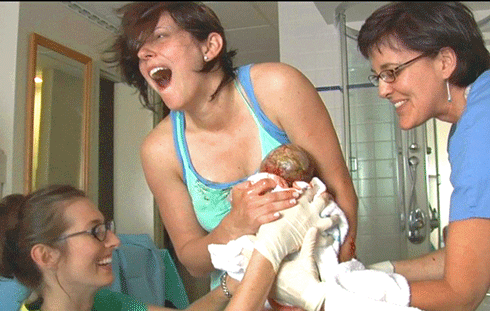Don't you just want to squeeze him?

 ACOG, my very favorite organization, has released a new policy statement on "oral intake during labor" (committee opinion #441). You'll be very happy to know that women will now be allowed to drink clear fluids while laboring.
ACOG, my very favorite organization, has released a new policy statement on "oral intake during labor" (committee opinion #441). You'll be very happy to know that women will now be allowed to drink clear fluids while laboring.Policies restricting food and liquid intake date from an era when laboring women were routinely given general anesthesia and risked aspirating food into the lungs. Modern anesthetic techniques have virtually eliminated this risk, which is further reduced by the fact that only a tiny minority of laboring women, even among those who deliver via cesarean section, actually receive general anesthesia.
"The women I care for eat when they are hungry and drink when they are thirsty, all without asking for ACOG's permission first," said Elizabeth Allemann, MD. "Women deserve to be fully informed about what the evidence actually shows, and it's time that the medical profession abandoned policies based on the outdated and paternalistic idea that patients should play no role whatsoever in the decision-making process."









 Josiah has discovered that he can initiate peek-a-boo games. This morning he pulled his blanket over his head, pulled it back down, grinned and said "ahh!!" This was repeated, with giggles, multiple times. He was awfully pleased with himself!
Josiah has discovered that he can initiate peek-a-boo games. This morning he pulled his blanket over his head, pulled it back down, grinned and said "ahh!!" This was repeated, with giggles, multiple times. He was awfully pleased with himself!







 Lullaby Slings is sponsoring a giveaway! To participate, go visit my friend Meg at Sew Liberated. To enter, leave a comment there (NOT here.) Sew Liberated is a great place to hang out for awhile. Take a few minutes to look at Meg's patterns, Montessori resources, and her beautiful little boy!
Lullaby Slings is sponsoring a giveaway! To participate, go visit my friend Meg at Sew Liberated. To enter, leave a comment there (NOT here.) Sew Liberated is a great place to hang out for awhile. Take a few minutes to look at Meg's patterns, Montessori resources, and her beautiful little boy!
 A new study from the Netherlands:
A new study from the Netherlands:The largest study of its kind has found that for low-risk women, giving birth at home is as safe as doing so in hospital with a midwife.This isn't surprising, but it is awfully helpful to have a large study (530,000 births!) confirm it.
The Royal College of Obstetricians and Gynaecologists (RCOG) said it supported home births "in cases of low-risk pregnancies provided the appropriate infrastructures and resources are present to support such a system.If only ACOG could be so reasonable...